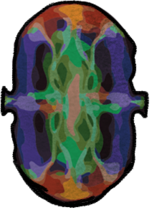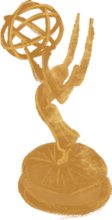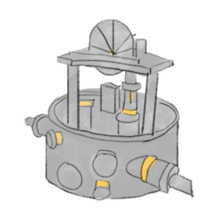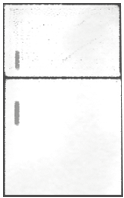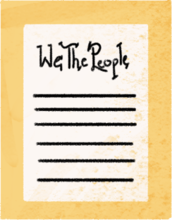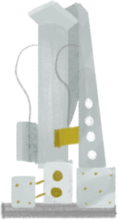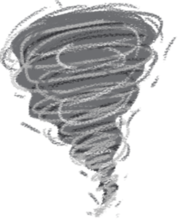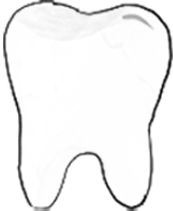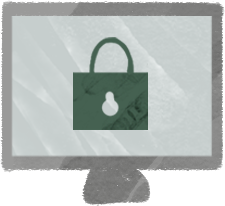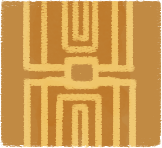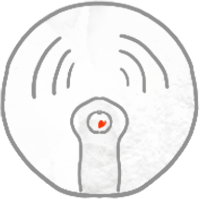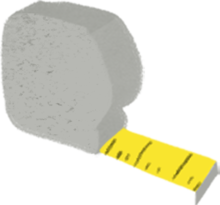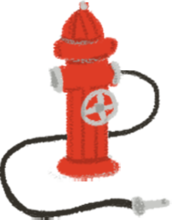Key to NIST Postcard Icons
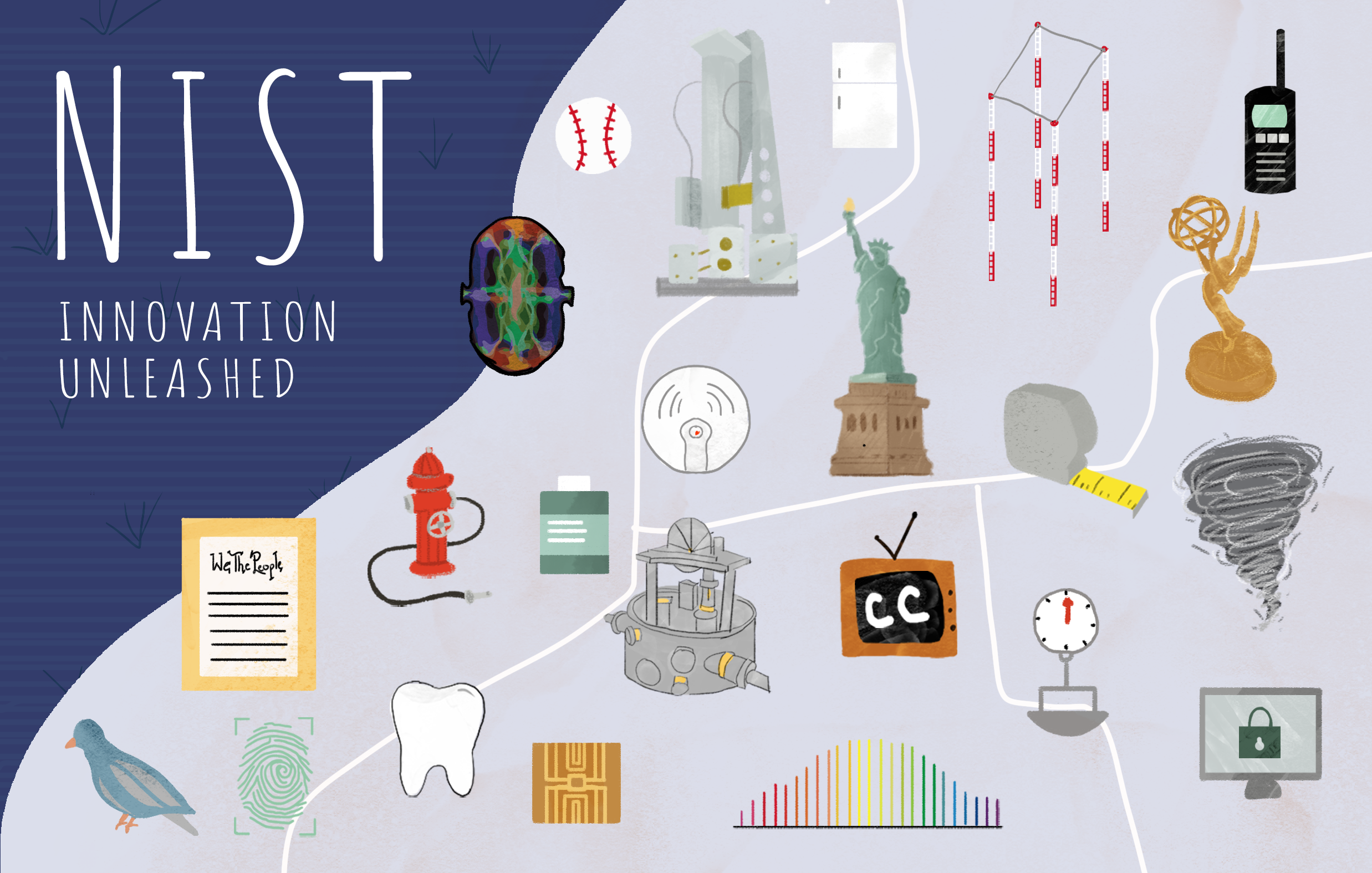
If you got a copy of our new postcard (above) and want to know more about the research behind the various icons, check out this handy key.
Icon designs by Natasha Hanacek.
Curveballs really curve
For the better part of the 20th century, the curveball was a hotly debated topic among fans and players, with many dismissing the ball’s apparent sideward movement as an illusion. With the aid of several Washington Senators’ pitchers and a wind tunnel, retired NIST director Lyman Briggs demonstrated that a thrown ball can curve up to 44 centimeters (17.5 inches) while traveling the 60 feet and 6 inches that separate pitcher and batter. Read the 1959 press release about this work.
Birth of a superstorm
Eric Cornell of JILA, a joint institute of NIST and the University of Colorado Boulder, shared the 2001 Nobel Prize in physics for his work in creating the world's first Bose-Einstein condensate (BEC) — a new state of matter that emerges in gases at temperatures of just a few billionths of a degree above absolute zero. Scientists now routinely use BECs to simulate and study quantum mechanics up close and in slow motion.
Who was Detective X?
In 2018, NIST’s video team received an Emmy® Award for a documentary titled “Detective X: (Re) Discovering Wilmer Souder,” which followed a scientist and a historian’s work to discover the mostly forgotten history of Wilmer Souder, a scientist who worked at the National Bureau of Standards (now NIST) from 1911 to 1954.
Souder was an early expert in the field of forensic science. His careful analysis of evidence and expert testimony sent to prison countless murderers, bootleggers, gangsters and thieves. The most famous case he worked on was the Lindbergh kidnapping case, and this video reveals that his involvement in that case was much greater than previously known.
NIST in your TV
Closed captioning originated with a system called TvTime, developed by NIST’s Dicky Davis, James Jesperson and George Kamas in 1971 in order to send out time and frequency information in a television signal.
Later, NIST and ABC used the technology to caption an episode of The Mod Squad, and by 1979 all the major networks were using it.
In 1980, NIST, ABC and PBS won an Emmy® Award for outstanding engineering achievement.
A change hung in the balance
In 2018, delegates representing 60 countries voted to implement the most significant change to the International System of Units (SI) in more than 130 years by redefining the kilogram, the international unit of mass. As a result, today all measurement units are defined by natural phenomena rather than by physical artifacts. NIST’s contribution to this work was done using an instrument called the Kibble balance.
We need less hot air
While we haven’t directly contributed to building bigger and better refrigerators, we have created a database called REFPROP that is important to the refrigeration industry. REFPROP includes physical properties of alternative refrigerants that will help U.S. industry convert from chemicals that deplete the Earth’s ozone layer to more environmentally acceptable ones.
Keeping Lady Liberty standing tall
You may know that France gifted us the lady with the lamp in 1876, before NIST even existed, but did you know that she might not still be standing today if not for our help? In 1981, as part of the National Park Service’s restoration project, pieces of her armature were sent for analysis to metallurgists at NIST. Our recommendation? Due to corrosion, NPS should replace most of the framework in the Statue of Liberty — including all rivets, ribs, joints and connectors — with a corrosion-resistant metal.
Preserving our nation’s watchwords
Preserving historic documents is no easy task … especially when the documents are as precious as the Declaration of Independence, the Constitution of the United States and the Bill of Rights. These three documents, known collectively as the Charters of Freedom, have enunciated the rights of Americans for more than 200 years. And the task of preserving these hallowed pages of parchment was twice entrusted to the National Institute of Standards and Technology (NIST).
- Learn more about the encasements.
- NIST also helped preserve the Waldseemüller Map, the Magna Carta and the Emancipation Proclamation.
Keeping time
From the Global Positioning System to stock exchanges, many modern technological systems depend on the precise synchronization of time and frequency signals that is made possible by highly accurate atomic clocks, the first of which (based on the ammonia molecule) was operated by NIST in 1949.
Today, NIST researchers are hard at work creating ever more precise atomic clocks that can be used for much more than just timekeeping.
Resilience
On May 22, 2011, a deadly tornado in Joplin, Missouri, left a 35-kilometer (22-mile) path of destruction. The storm killed 161 people, destroyed some 8,000 structures and left $2.8 billion in damages in its wake. NIST was called on to study the devastation and make recommendations on how communities nationwide could become more resilient to tornadoes. The most recent outcome from that work is a new series of wind speed maps that engineers can use when designing buildings. This study is just one example of the work NIST does in disaster and failure studies.
- Read our news story about the wind speed maps.
- Read our feature story about what changes resulted from our Joplin investigation.
- Learn more about NIST’s other disaster and failure studies projects.
- Learn more about the Joplin study.
- Read about why it can take a number of years to complete these studies.
Truth in a bottle
SRMs, or standard reference materials, are materials that have been thoroughly measured by NIST. They serve a variety of purposes but are mostly used by research and industrial labs to check their analytical measurements on similar materials and to perform other kinds of quality-control tests. NIST sells more than 1,000 different types of SRMs, from gold nanoparticles to peanut butter to monoclonal antibodies.
Pigeon pilots
There was a time during World War II when pigeons almost became the next war heroes ... until scientists at NIST grounded them thanks to some other winged friends.
- Read our blog post about these bird-brained bombers.
- Learn more about other World War II research from NIST: overview and highlights.
Say cheese
NIST has a long history of dental research. In the 1950s, a partnership between NIST and the American Dental Association resulted in the invention of the panoramic X-ray machine, which made it possible to image the entire mouth with only one exposure, minimizing the radiation dose to dental tissues. The collaboration also contributed to the invention of the high-speed dental drill. NIST research also played a role in the development of composite filling materials and dental adhesives.
NIST researcher Wilmer Souder, whom you read about earlier on this page, was best known during his life for his dental research. This “Father of Dental Materials Research” made such an impact that there is an International Association for Dental Research award in his honor, and rumor has it the molar gargoyle at the Washington National Cathedral is a tribute to Souder and his work.
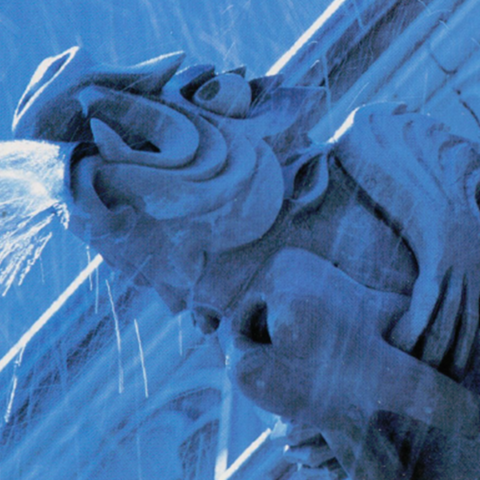
A light ruler
Optical frequency combs are specialized lasers that act like a ruler for light. They measure exact frequencies of light — from the invisible infrared and ultraviolet to visible red, yellow, green and blue light — quickly and accurately. These Nobel Prize-winning devices fill an important technological gap. Optical frequency combs allow scientists to measure and control light waves as if they were radio waves.
A weight-y issue
Consumers can trust the weight or volume given on food labels thanks in large part to NIST, which convened the first meeting of state weights and measures officials in 1905. NIST’s work to ensure fairness in the marketplace continues today through activities such as support of the National Conference on Weights and Measures and the work of its Office of Weights and Measures.
- Learn more about NIST’s role in states and weights.
- Watch other Get What You Pay For videos on tare, seafood and the gas pump.
- Read up about how you know you’re getting what you pay for at the grocery store.
How secure is your data?
For more than 50 years, NIST has been providing cybersecurity guidance to other government agencies and businesses of all sizes. We’ve also been moving forward advances that make everyday life more cyber secure. Our contributions touch everything from data encryption and post-quantum cryptography to identifying software vulnerabilities to providing cybersecurity guidance for supply chain risk management. But that’s just scratching the surface.
- Check out our cybersecurity history timeline.
- Read our blog posts about the security of your DNA, post-quantum cryptography and cybersecurity labeling for consumer IoT devices.
It’s a trap!
NASCAR and Formula One drivers zoom through racetracks at sporting events, while NIST researchers make miniature racetracks for electrically charged atoms (known as ions). While sports car drivers use premium fuel, NIST’s scientists use precise electric fields to trap ions and guide them through the lanes of the racetrack where they can carry out computer operations with atomic-level efficiency. These racetrack ion traps are part of an effort to make quantum computers that would be more powerful than traditional computers in performing certain tasks. Dave Wineland shared the 2012 Nobel Prize in physics for his work at NIST in helping to develop ion-trapping systems like these to carry out useful tasks from timekeeping to computation.
Keeping your family safe
When it comes to keeping you and your family safe, few devices play as critical a role as smoke detectors. How important are they? The U.S. death rate from fires declined by 50% between the early 1970s and late 1990s, in large part because smoke detectors are now installed in more than 95% of homes. NIST made this improvement possible by developing, with Underwriters Laboratories’ participation, the first fire performance standard for smoke detectors and recommendations on number, type and placement. Today, we’re still working with UL on standards for improved smoke detectors.
Can you hear me now?
In a crisis situation, it’s critical that first responders and other emergency personnel be able to easily talk with each other to ensure a coordinated, successful response. But often that’s not the case. NIST is hard at work performing and funding research on public safety communications to help overcome the many challenges in this space, from how disparate systems can connect to improving drone technology to reach remote places.
We’re on the air
NIST played a role in the world of radio transmissions as early as 1916, when scientists patented an improved design for a radio direction finder (RDF), a special antenna that determined the direction of radio transmissions and aided in navigation. It served as a prototype for the U.S. Navy and was used widely to pinpoint the positions of enemy forces during World War I.
Soon after, in 1920, NIST began experimental broadcasts of music and speech about six months before the first commercial station came on the air. NIST used these broadcasts to study the technical problems that plagued early radio, and in 1923, NIST began broadcasting standard frequencies from its station WWV in Beltsville, Maryland, to help commercial radio stations avoid interfering with each other’s signals.
In the 1950s, NIST’s Boulder laboratories began broadcasting experimental low-frequency signals, and in 1963, the station was relocated to Fort Collins, Colorado, renamed WWVB, and began broadcasting time and frequency signals. Today, radio-controlled clocks in most of North America use WWVB to synchronize themselves with NIST’s atomic clock in Boulder.
Measure up
You need to measure length accurately to do things like make a dress, build a house, survey a plot of land, or determine if the home team made a first down on the football field. These length measurements and many others are often made with the help of a measuring tape. But how do you know you can trust that the measurements the tape is giving you are correct? Enter NIST and our tape measure tunnel.
It’s a match!
Some studies have shown that different forensic examiners occasionally come to different conclusions when assessing the same evidence. This is not unexpected, as any human endeavor necessarily involves individual judgment. However, chances of making errors can be reduced. NIST is working to develop computer algorithms that would automate some parts of the fingerprint analysis process, with the goal of reducing the opportunities for error and making the process more reliable and efficient. We also work on the technology behind contactless fingerprints.
But that’s just one small piece of the forensic science in which NIST is engaged. Other areas include biometrics, DNA analysis, ballistics, and drugs and toxicology.
- Learn more about our forensic science program.
- Check out our feature stories on DNA mixtures, scanning the Kennedy assassination bullets and NIST’s work to combat the opioid epidemic.
- Read some of our forensics-related blog posts: DNA remains and the World Trade Center investigation, improving forensic chemistry and our work around recovering evidence from mobile devices.
Trial by fire
The Great Baltimore Fire of 1904 burned for more than a day and destroyed 1,500 buildings. Starting on a quiet Sunday morning, the fire spread quickly and overwhelmed the city’s ability to fight it alone. Fire companies from New York, Philadelphia, Wilmington, Harrisburg and elsewhere swiftly rushed in to help. They had more than enough water and people to fight the fire, but there was a problem: Most of their fire hoses wouldn’t fit the hydrants, prolonging the fire to 30 hours and damaging an area the size of 70 blocks in the city’s business district. A NIST study found more than 600 variations in firehose fittings across the U.S. NIST worked with the National Fire Protection Association to usher in a national standard for fire hydrant connections. Thanks to this standard, firefighters from different companies can now work together more easily to extinguish large fires.
But NIST’s work in the fire space didn’t stop there. Research has covered everything from fire safety engineering and firefighting to fire investigation and fire testing to fire data management and intentional burning. We also do considerable research into what are called wildland urban interface fires, such as the Camp Fire in California.
- Check out this photo essay chronicling NIST’s fire research throughout the years.
- We burned a Christmas tree to show you why keeping your tree watered is so important.
- Read this blog about making upholstered furniture more resistant to fire, this blog about the investigation into the fires in the World Trade Center or this one about wildfires and fences.
- Check out this photo essay about the Camp Fire, California’s deadliest wildfire.



